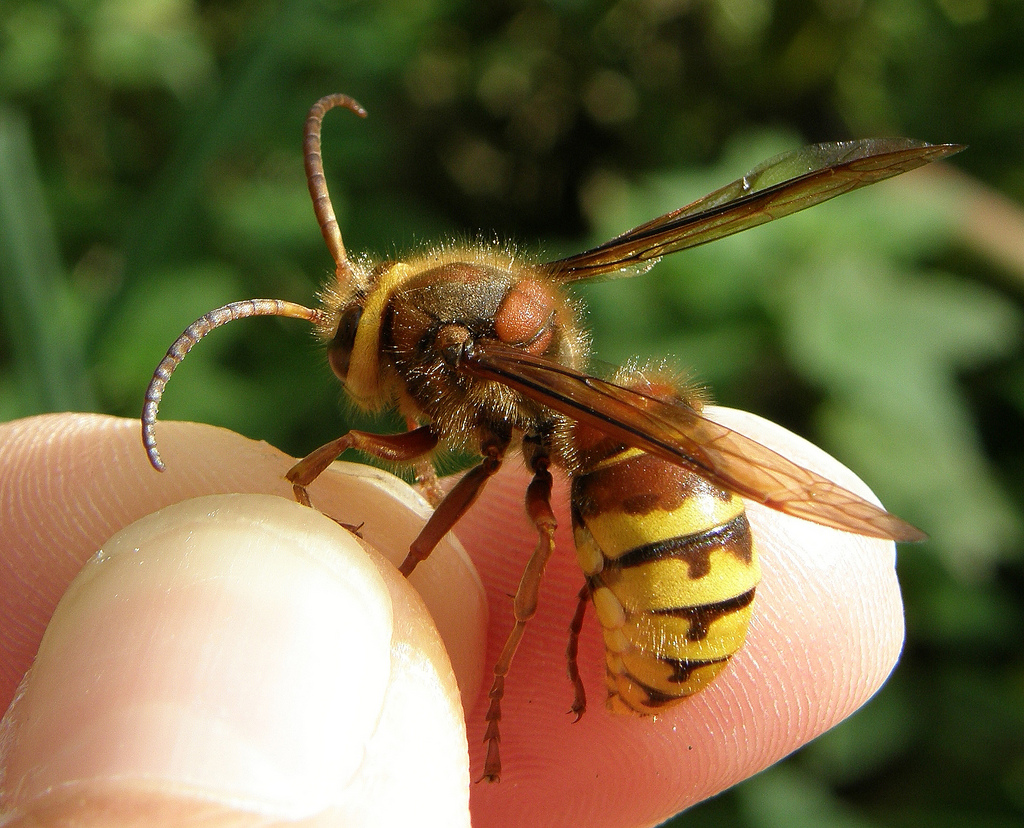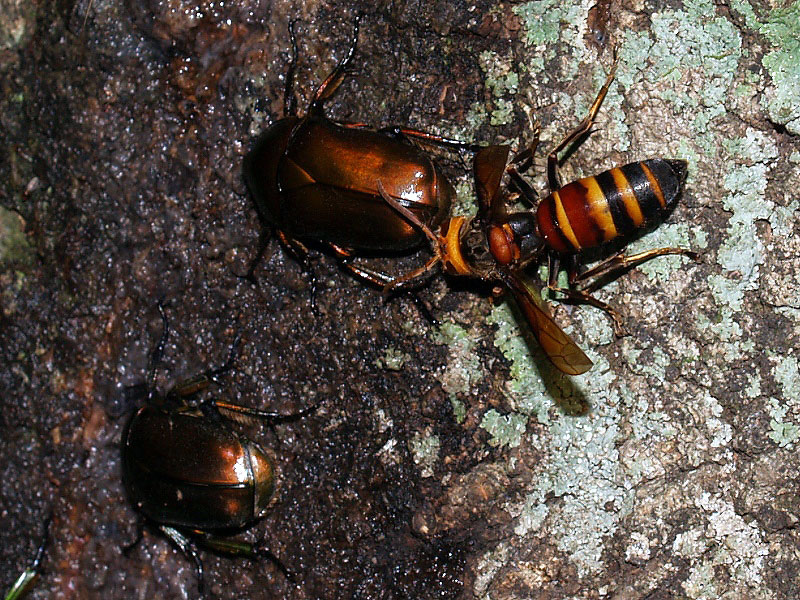Reproduction

Surprisingly despite its large
size, the Asian giant hornet is outranked in the amount of cells it
produces by V.mongolica by a wide margin. This leads to the
feeling that these nests are less complex than other Vespa
family members, and one of the papers describes this as almost
“primitive”, though he believes that it is a possible result of its
subterranean lifestyle. Additionally the larvae are first laid in
early July once a fertilized queen finds a proper nesting site. The
queen builds the first group of combs and rears the workers she
needs to build the nest, which are produced until mid-September when
males and new queens begin to be produced (Matsuura and Sakagami 1973).
These larvae have the lowest cranial width to mouth parts width
ratio of the observed Vespa, as well as a lack of a
mid-cranial sulcus just above the clypeus-or a groove in the middle
of the insects face above an individual segment of the face directly
above the mandibles. The larvae also have a specialized head shape
different from other Vespa, separating it further from other
closely related wasp species that share the same above traits.
However a trait it shares with all members of the Vespa
family is that when hungry, the mature larvae will scrape the
sides of their comb with their mandibles, and were shown to
always accept food, as opposed to those larvae who did not
scrape the comb walls
(Seiki 1976). V. mandarinia larvae, like all other
members of the Vespa family and many other members of the
Hymenoptera Order, produce silk around themselves to further cocoon
themselves in their combs. Their silk proteins are most similar to
Vespa ducalis, as both contain a special protein-dubbed 6-that none
of the other Vespa tested contain, possibly due to closer
relatedness than other members tested (Kameda and Kojima et al.
2008). A V. ducalis is shown here at the patch, and while
it is similarly colored, it can be seen to be much smaller as
compared to the V. mandarinia, shown in the third image on
the adaptation page
feeding at the same patch.

After mid-September the males and new queens start
leaving the nest, and they will never return. Uniquely for the Asian
giant hornet, males will visit other nests and wait at the entrances
for the new queens, attempting to mate with them as they depart. The
queens will find somewhere to hibernate regardless of whether or not
they mate, sometimes even forcing the male off and continuing
onwards, to find some sanctuary until the next season (Matsuura and
Sakagami 1973).
Venom
Interactions
Home page
References